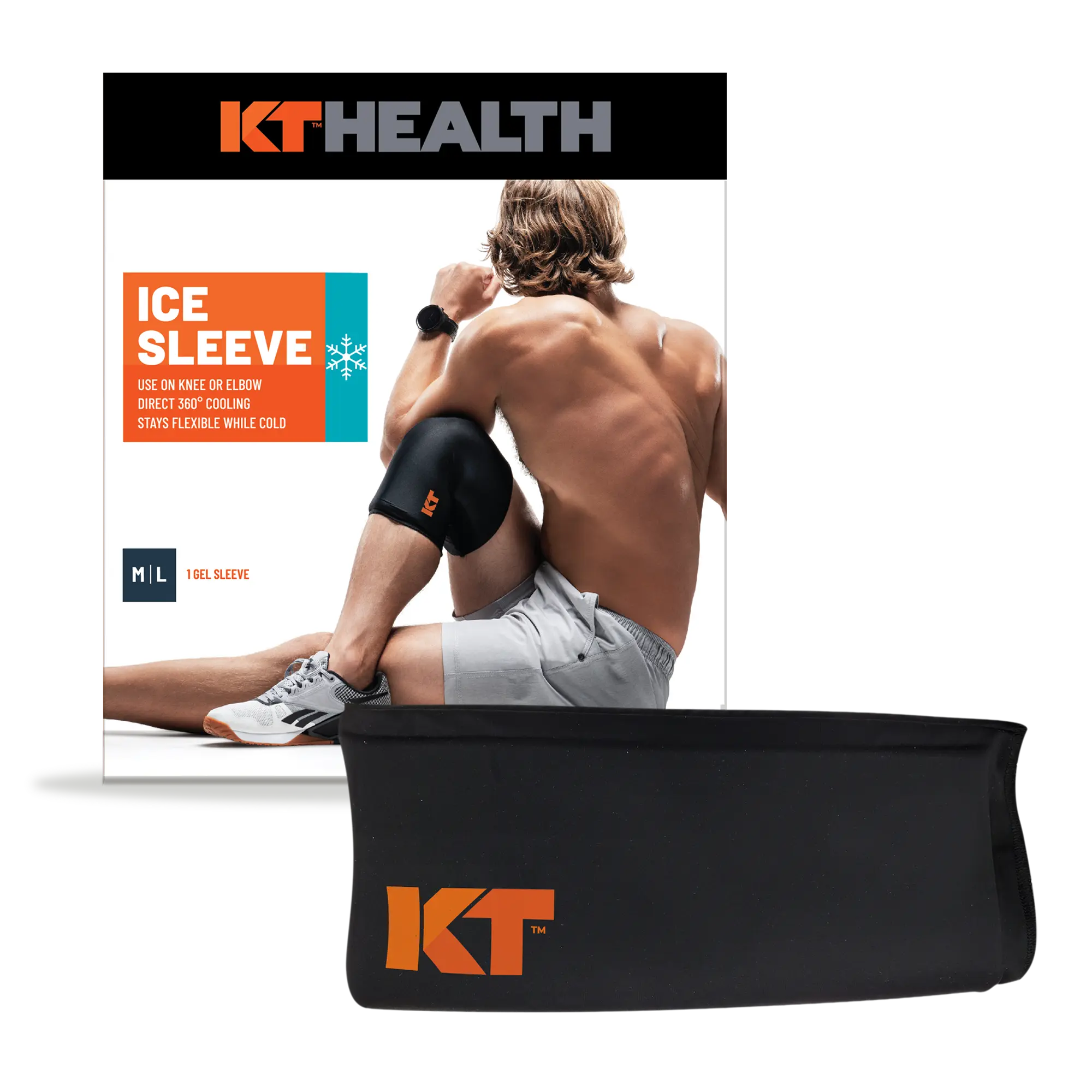Pickleball is having a moment. It doesn’t matter if you’ve picked up a paddle for weekend fun or you’re rallying your way through local tournaments; chances are you’ve felt that post-game soreness creeping in. Elbows stiff, knees cranky, and shoulders a little less mobile than they were in the first match? You’re not alone.
Although pickleball is a lower-impact sport, it still places repetitive stress on your body. And if you’ve ever thought, "Why am I sore after playing pickleball?"—here’s your answer: every serve, lunge, and volley challenges your muscles, tendons, and joints. That’s where smart recovery comes in, and KT Tape steps onto the court as one of your best allies.
KT Tape is a kinesiology tape trusted by athletes to help relieve pain, support joints and ligaments, and partner for recovery without medication and with less downtime. In this guide, we’ll walk you through the entire pickleball recovery process and explain how to use KT Tape as a reliable tool to keep you feeling strong both during and after play.
Why Recovery Is Essential for Pickleball Players
Pickleball may be fun, but your body doesn’t always think so—especially if you’re new to the sport, returning after time off, or playing back-to-back games. Quick changes in direction, hard stops, and overhead swings put stress on your muscles and joints. Unlike slower-paced sports, pickleball’s bursts of activity create cumulative wear. That’s why many players over 40—or even younger athletes—find themselves asking, "How do I recover faster after pickleball?"
Recovery is your ticket to staying pain-free, performing better, and playing more consistently. Without it, those minor aches can spiral into full-blown pickleball injuries—think chronic elbow pain, strained knees, or lingering foot discomfort. Good recovery helps repair tissue, restore range of motion, and prevent overuse issues before they sideline you.
Common Pain Points: Where Pickleball Hurts Most
Pickleball Elbow
If your elbow feels sore or tender after a match, you might be dealing with lateral epicondylitis—aka pickleball elbow. This common overuse injury results from repeated wrist and arm movements. Gripping your paddle too tightly or repeatedly hitting backhands can inflame the tendons.
KT Tape helps by lifting the skin slightly, increasing circulation to the area, and reducing pressure on inflamed tendons. It also offers light support to stabilize your movements without restricting motion, so you can keep swinging comfortably.
Shoulders
Your rotator cuff takes the brunt of overhead shots, serves, and smashes. If you’re feeling sharp or dull pain around your shoulder joint after a match, you could be dealing with impingement or muscle strain. Taping the shoulder can help reduce inflammation, stabilize the joint, and minimize awkward compensation that could lead to further issues.
Knees
Knee pain after pickleball often stems from joint fatigue, patellar tracking issues, or early-stage MCL irritation. If you’ve found yourself wondering why your knees feel tight after a long session, it’s usually the combination of lateral movements and hard stops.
KT Tape applied to the knee may help improve proprioception (your body’s awareness of joint positioning), support proper movement, and reduce pressure on stressed ligaments.
Feet and Heels
Foot pain, especially around the heel or arch, is often due to plantar fasciitis—a common issue for players who move fast and wear unsupportive shoes. KT Tape can be applied to support the arch, reduce pull on the fascia, and encourage healing through improved circulation.
So if you’re asking yourself, "What should I tape after a match to reduce pain?"—start with your most sore areas: elbow, shoulder, knee, and foot. And always tape based on how your body feels.

KT Tape Techniques to Support Faster Recovery
When applied correctly, KT Tape can help reduce swelling, boost lymphatic drainage, and support overworked muscles. Many players use it during and after play to reduce next-day soreness, but it also works well during games to support joints that may be subject to overuse.
Here’s how KT Tape supports you post-pickleball:
-
Improved circulation: The tape gently lifts the skin, allowing better blood flow which can help reduce inflammation.
-
Reduced pressure: It helps offload stress from tendons and ligaments.
-
Pain relief: The gentle stimulation of nerve endings under the skin can reduce pain signals.
Which KT Tape Should You Use?
-
KT Tape Pro: Strong, waterproof, and durable—great for extended wear during or after activity.
-
KT Recovery Patch: Designed specifically for inflammation and swelling.
-
KT Tape Pro Ice: A menthol-infused pro-level kinesiology tape with pain relief and cooling all in one—perfect after an intense match.
Pro Taping Tips
If you’ve asked, "How often should I use KT Tape after playing?"—you can tape after every session if needed, especially for recurring soreness. You can use Pro for up to 5-7 days. Avoid over-stretching the tape (10–20% stretch is enough), and wait an hour after application before sweating or showering for best adhesion.
Building a Well-Rounded Pickleball Recovery Routine
KT Tape plays a key role, but full recovery needs a well-rounded approach. Think of it like your post-game ritual that gets you back on court feeling stronger.
Hydration and Nutrition
Dehydrated muscles cramp and recover slower. Replenish fluids with water and electrolytes right after play. Pair that with a snack rich in protein and carbs—like a smoothie with banana and protein powder—to fuel muscle repair.
Stretching and Foam Rolling
Stretch your hips, quads, calves, shoulders, and wrists after play. A few minutes of foam rolling can release tight fascia and reduce muscle soreness.
Quality Sleep
Sleep is when your body gets to work repairing itself. Aim for 7–9 hours of uninterrupted rest. Your performance (and pain threshold) will thank you.
Compression and Cold Therapy
Compression socks or sleeves can support your recovery post-play. For sore joints or inflammation, use ice packs or try a KT Health Ice Sleeve to combine compression and cooling in one step.
Recovery Tools
Massage balls for sore feet, recovery shoes to reduce post-match foot strain, and even portable massage guns can help relax tight muscles. When used alongside KT Tape, these tools support healing and prep you for your next game.
When to Tape and When to Call the Pros
If your pain is light, inconsistent, or feels like general post-exercise soreness, KT Tape is a fantastic tool to manage it. But if your pain lasts longer than a few days, limits your movement, or gets worse with play, it’s time to see a physical therapist or sports medicine provider.
KT Tape works well as part of a professional treatment plan too—so don’t hesitate to use it between appointments for added support.
Final Serve: Stay in the Game With Smarter Recovery
A full recovery plan is your secret weapon for staying injury-free and competitive. With the right mix tactics including KT Tape support, hydration, mobility work, rest, and smart gear, you can stay on the court longer and stronger.
KT Tape is trusted by athletes for a reason. It empowers you to treat pain early, reduce the pain from injury, and recover on your own terms. So, if you’re dealing with pickleball elbow, navigating minor pickleball injuries, or just sore after a weekend tournament, use this playbook to bounce back fast.
Tape up, rest smart, and get ready for the next round. Your best game starts with better recovery.










